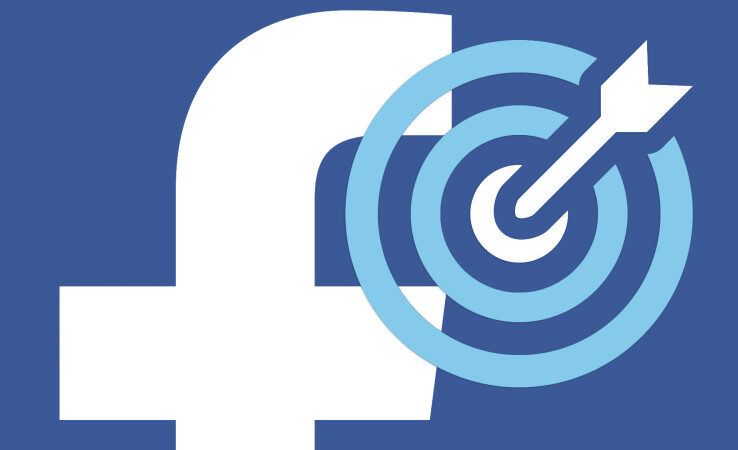When most advertisers and agencies are creating paid social ad campaigns, they often start with their targeting criteria first and then come up with creatives that match.
While this is the traditional approach, it isn’t always the best. In our experience, sometimes it’s best to let the creative lead the process of finding your customers, and therefore define what targeting falls in place for your campaigns after the fact. This is largely thanks to Facebook’s advanced machine learning capabilities, which can help you discover new audiences you may not have realized that you have.
In this post, we’re going to look at why your creatives impact your targeting, and how to use this strategy to expand your audience and drive more conversions.
Why Creative Will Impact Targeting
Traditionally, brands will set up an audience they think will be valuable and then try to build creatives that the audience would respond to.
In our experience, if you have a pixel with plenty of data coming in (50 plus purchases a week at the ad set level), Facebook is good enough at finding you conversions even without any targeting criteria from you. They’ll look at users who have browsed your site and taken actions like purchasing to analyze it for age, gender, and interests, and they’ll deliver the ad to more people who are similar.
If you’re familiar with lookalike audiences, it’s the same idea, only Facebook is honing in on the target audience without any help from you. The pixel data is your target audience.
When you change up your existing creatives, therefore, it makes sense that your ad campaigns will draw clicks from users in different audience niches. This shifts Facebook’s internal targeting optimization without any action on your part, and it ensures that you haven’t accidentally excluded any members of your target audience with targeting limitations.
When we were at Facebook, we A/B tested a framework of no targeting using optimal solutions, and this often outperformed most client targeting tactics by 2x-3x on average. This held true across multiple different industries, and we saw over and over again that micro-targeting, hypersegmentation, and stacked lookalikes never outperformed the simple act of letting Facebook take the reigns.
The pixel ultimately will handle targeting for you, so you need to point it in the right direction.
Let’s look at an example of how this works.
How Creatives Can Dictate Targeting
We recently worked with a retail client in the fashion industry whose initial creatives were largely attracting younger audiences, with a little under half of their conversions being 18-24 years old. This was largely due to the clothing featured, including crop-tops and shorts, and the fact that they’d given the system the full range of anyone 18+.
We discovered, however, that users ages 18-24 had the lowest lifetime value out of their existing customers. At the time, we didn’t know how much the creative dictated the targeting, so we thought we could just target the same crop top and shorts to users who were 25 years or older. We were wrong and our acquisition costs skyrocketed because this outfit choice just didn’t resonate with older audiences.
When we revised the creative strategy, the ads started to attract a higher-value audience that was aged 25+, at much lower acquisition costs. We showed more conservative outfits laid out flat, and this one simple change shifted which audience we were attracting. In fact, the 25+ age bracket ended up being over 80% of all subsequent conversions.
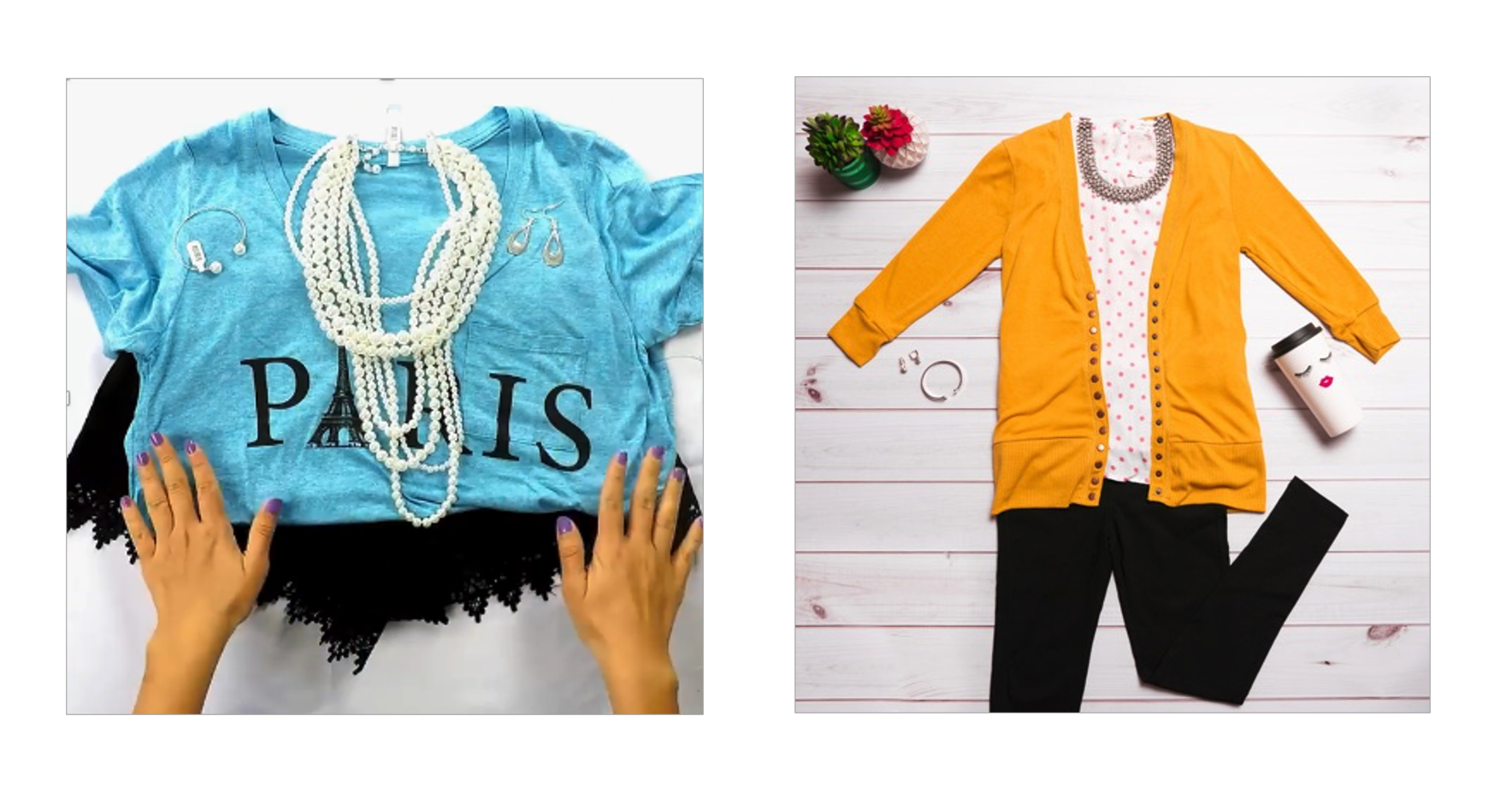
It’s important to keep in mind that sometimes we give Facebook a baseline audience to target when we’re adding our own meticulous, detailed targeting information. Intentionally breaking outside of those set criteria can help you test new audiences to see how they respond to your campaigns. If you don’t, Facebook’s algorithms will stay focused on who you were already focused on.
How to Make Creatives That Speak to Different Audience Niches
When you’re working on your creatives and assessing what your overall audience may want to see, there are going to be two different ways to break down audience niches: demographics, and barriers or motivations.
Demographics
The demographics of your audience matters.
If you’re selling cosmetics, for example, having creatives that show your makeup on different skin tones and on people of different ethnicities will help you attract customers in new demographics you may not have been reaching before. This is particularly true if most of your previous campaigns featured white models, as many cosmetic brands don’t have options for darker-skinned people.
Glossier is a great example of this, featuring people of all skin tones in their ad campaigns. This shows customers that the product is relevant to them, expanding the brand’s relevance to these users significantly.
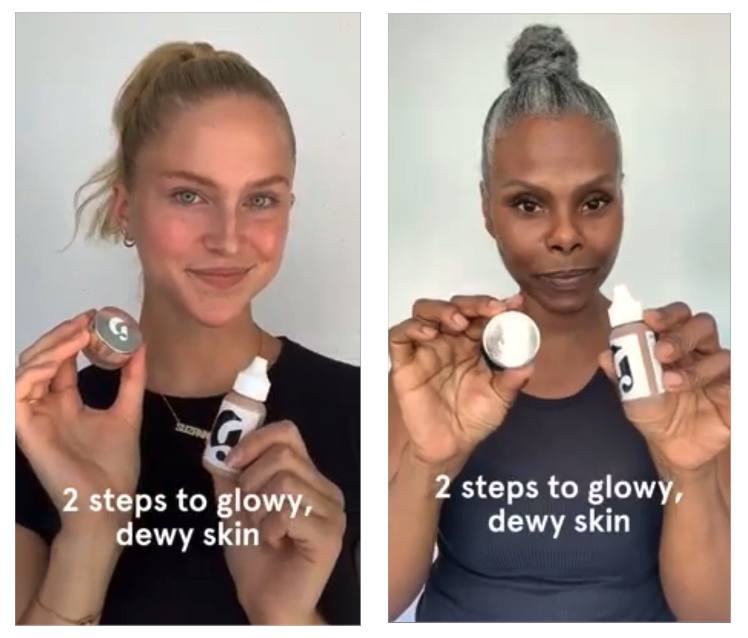
To quantify the above, we tested using creators of different skin tone for a beauty client we work with.
The product was the same. The targeting was the same. The landing page was the same. The ad copy was the same. The structure of the video was the same. The only difference was the creator highlighted.

The results:
– Legacy (White) Creators: Drove ~90% lighter tones
– Black creators: Drove 50%+ darker tones
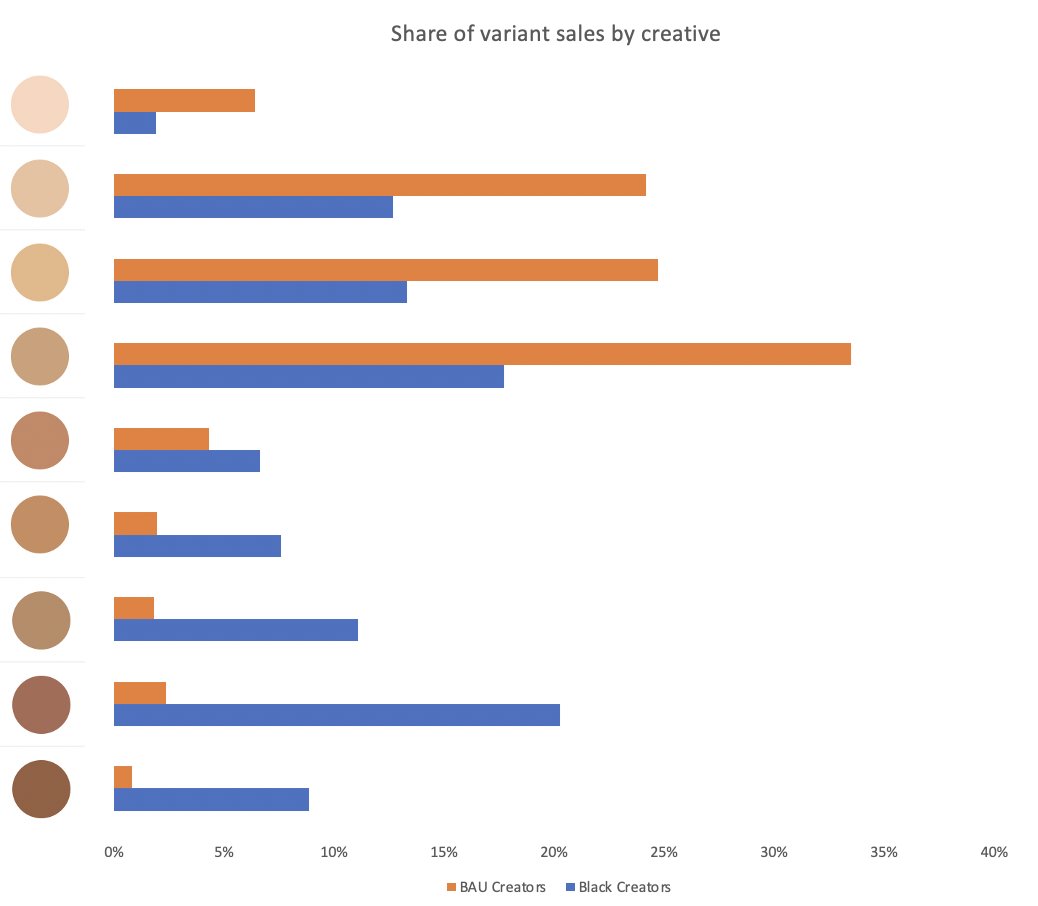
It’s clear that highlighting diversity as a brand isn’t just the right thing to do, it’s good for business.
Different Barriers or Motivations
Motivations, barriers, and pain points can reach beyond demographics, but can still result in distinct audience niches.
UPRIGHT is a great example of this. They sell a posture training device that encourages users to sit and stand up straight in proper alignment.
Their product appeals to different audiences based on their unique pain points and motivations, which include the following:
– Addressing back pain from office workers who are sitting in low-quality chairs or are hunched over their computers.
– Improving posture for those who naturally slouch and who want to look more confident.
– Building a stronger back and core, which is important for those who are invested in fitness and strength training.
– Boosting back health for those who are health conscious or concerned, either due to genetic conditions or their doctor’s advice.
By creating ads that appealed to each of these pain points, they’re able to connect with more audience members that they may have otherwise missed. Facebook’s pixel can take over targeting from there, showing the right ad to the right users.
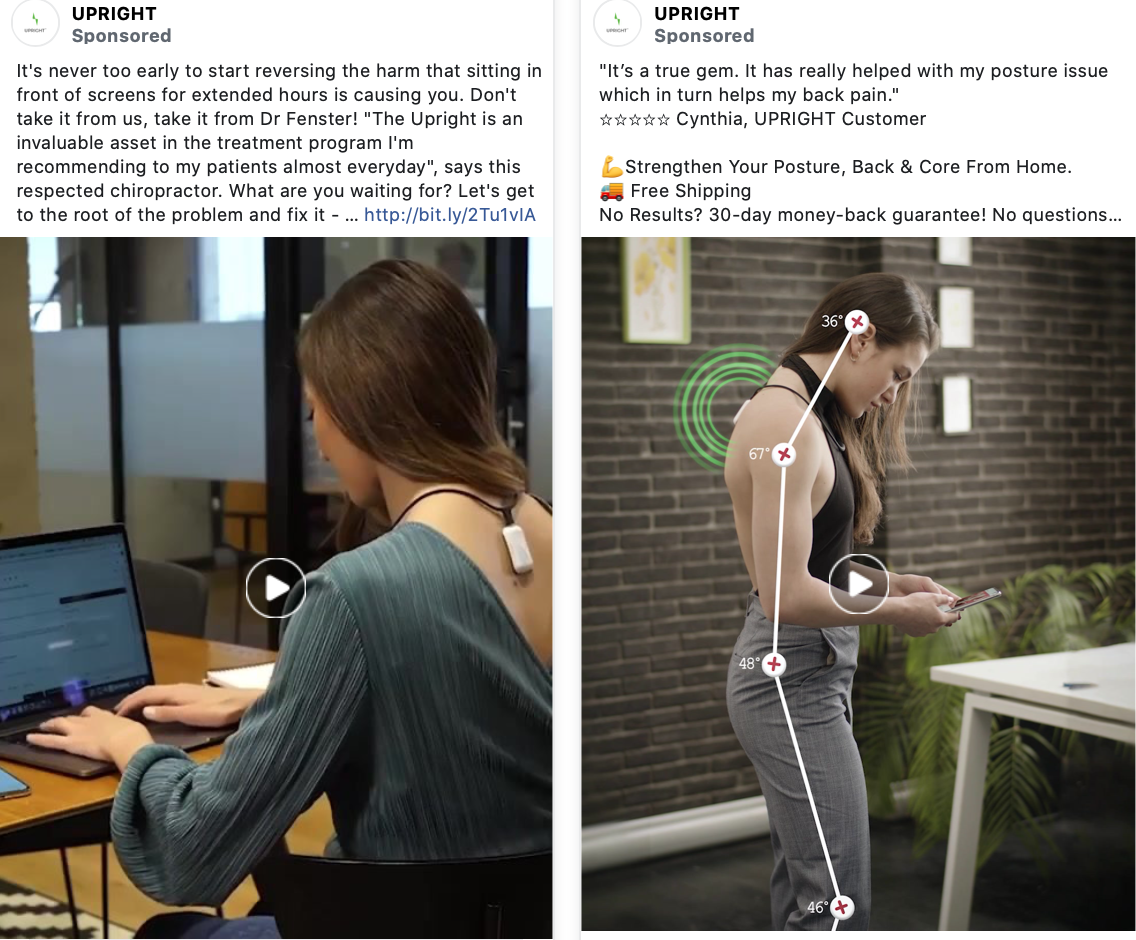
Even if you’re marketing the same product in each ad campaign, understanding pain points, barriers, and motivations will always be essential in creating high-converting copy that appeals to different niches in your overall audience.
Final Thoughts
When running ad campaigns, it’s tempting to want to play it safe and to stick to the audiences we know, especially if they’re already converting. If you don’t break outside the box, however, you could end up missing out on large, highly-profitable segments of your target audience without realizing it.
By designing creatives that highlight different aspects of what your products can do and how they benefit users, you’ll be able to break out into new audience niches without relying on detailed targeting criteria that may not have entirely worked. Letting the creatives speak for themselves (with the help of Facebook’s machine learning targeting capabilities!) can be a winning strategy when you’re scaling and testing new campaigns.
Interested in learning more about advanced paid social strategies that will help you reach new audiences, scale your campaigns, and drive more sales? Get in touch with us to learn about how we can help.

